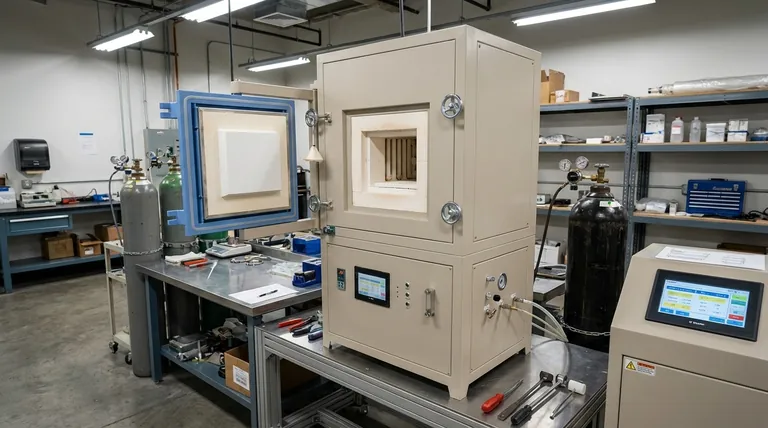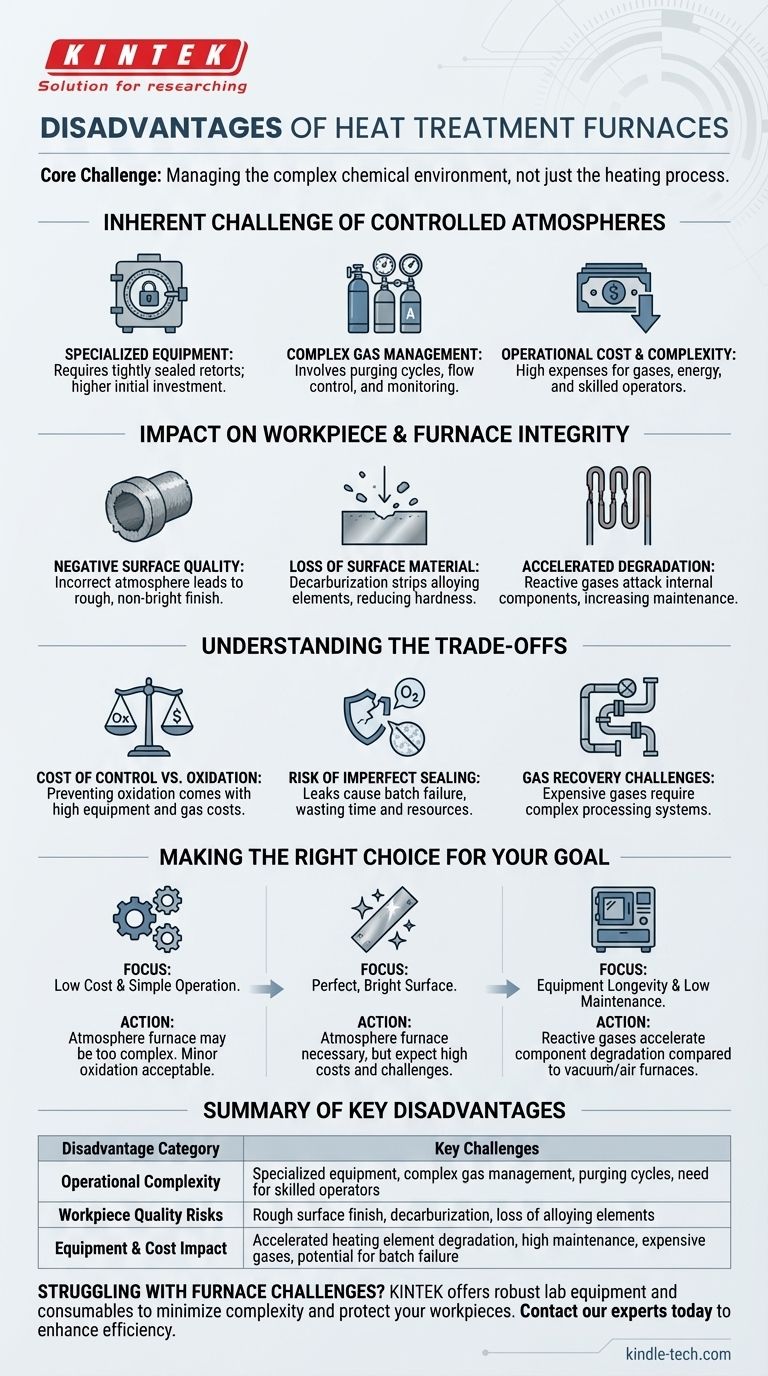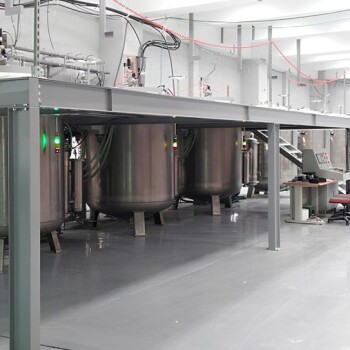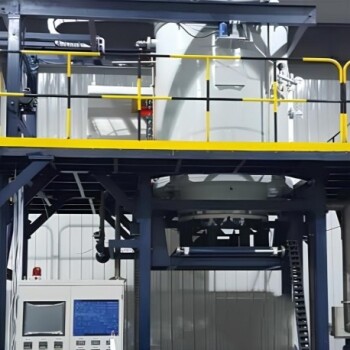At their core, the primary disadvantages of specialized heat treatment furnaces, particularly those using controlled atmospheres, are not related to the heating process itself but to the immense difficulty of managing the chemical environment within. These challenges manifest as compromised workpiece quality, accelerated equipment degradation, and significant operational complexity and cost.
The central challenge is containment. While controlled atmosphere furnaces aim to protect parts from oxidation, the gases used can themselves harm the workpiece and the furnace, introducing a host of material, operational, and financial drawbacks.

The Inherent Challenge of Controlled Atmospheres
Most significant disadvantages arise when a heat treatment process requires a furnace with a precisely managed atmosphere. This is far more complex than simply heating a part in open air.
Requirement for Specialized Equipment
Standard furnaces are not suitable for atmosphere control. The process demands a specialized, tightly sealed furnace or one that uses an internal sealed container, known as a retort.
This fundamental requirement means a higher initial investment in equipment designed specifically to contain the desired gases and prevent contamination from outside air.
Complexity of Gas Management
The entire process revolves around displacing the air inside the furnace and maintaining a consistent, pure atmosphere. This involves a purging cycle, where large volumes of the desired gas are used to flush out oxygen and nitrogen.
Managing the flow, pressure, and purity of these gases throughout the treatment cycle adds a significant layer of operational complexity and cost. It often requires sophisticated monitoring systems and highly trained operators.
Impact on Workpiece and Furnace Integrity
When the controlled atmosphere is not perfectly managed, it can cause more harm than good, affecting both the product being treated and the furnace itself.
Negative Effects on Surface Quality
Contrary to the goal of producing a clean part, improper atmosphere control can result in a rough and non-bright surface finish. This occurs if the gas mixture is incorrect or contaminated, leading to unwanted chemical reactions on the part's surface.
Loss of Surface Material
A critical risk is the loss of key alloying elements from the workpiece's surface, a process known as decarburization in steels. The controlled atmosphere can inadvertently strip elements like carbon from the surface layer.
This depletes the material's properties, especially surface hardness and wear resistance, potentially rendering the component useless for its intended application.
Accelerated Component Degradation
The reactive gases used in controlled atmospheres do not discriminate. They can aggressively attack the furnace's internal components, particularly the electric heating elements.
This chemical erosion leads to premature failure of critical parts, resulting in increased maintenance costs, frequent downtime, and reduced overall equipment lifespan.
Understanding the Trade-offs
The decision to use a controlled atmosphere furnace involves balancing the desired outcome against very real operational and financial risks.
The Cost of Control vs. Oxidation
The primary benefit of a controlled atmosphere is preventing the oxidation and scaling that occurs when heating metals in air. However, achieving this benefit comes at the high cost of specialized equipment, expensive gases, and process complexity.
The Risk of Imperfect Sealing
The entire process is predicated on the furnace's ability to contain the atmosphere. Any leak, no matter how small, allows contaminants like oxygen to enter the chamber.
This can ruin an entire batch of components, wasting time, energy, and the cost of the consumed process gas. The integrity of the furnace seal is a constant and critical point of failure.
The Challenge of Gas Recovery
The gases used, especially reducing gases, are often expensive and cannot simply be vented. Effective systems for processing and recovering these gases are complex and add another layer of cost and maintenance to the overall operation.
Making the Right Choice for Your Goal
The disadvantages of atmosphere furnaces are significant, but they must be weighed against the specific requirements of your project.
- If your primary focus is low cost and simple operation: The complexity and expense of an atmosphere furnace are likely a major drawback, especially if a minor amount of surface oxidation is acceptable.
- If your primary focus is a perfect, bright, and uncompromised surface: An atmosphere furnace may be necessary, but you must be prepared for the high operational costs and technical challenges involved in maintaining it correctly.
- If your primary focus is equipment longevity and low maintenance: Be aware that the reactive gases used in these furnaces will inherently lead to higher maintenance costs and faster degradation of internal components compared to vacuum or air furnaces.
Understanding these potential drawbacks is the first step toward selecting a heat treatment process that truly aligns with your project's specific technical and financial requirements.
Summary Table:
| Disadvantage Category | Key Challenges |
|---|---|
| Operational Complexity | Specialized equipment, complex gas management, purging cycles, need for skilled operators |
| Workpiece Quality Risks | Rough surface finish, decarburization, loss of alloying elements |
| Equipment & Cost Impact | Accelerated heating element degradation, high maintenance, expensive gases, potential for batch failure |
Struggling with furnace downtime or inconsistent results? KINTEK specializes in lab equipment and consumables, offering robust solutions for your laboratory's heat treatment challenges. Our expertise can help you select the right furnace technology to minimize operational complexity and protect your valuable workpieces. Contact our experts today via our [#ContactForm] to discuss how we can enhance your process efficiency and equipment longevity.
Visual Guide

Related Products
- 1700℃ Controlled Atmosphere Furnace Nitrogen Inert Atmosphere Furnace
- 1200℃ Muffle Furnace Oven for Laboratory
- Vacuum Heat Treat and Pressure Sintering Furnace for High Temperature Applications
- 1700℃ Laboratory Quartz Tube Furnace with Alumina Tube Tubular Furnace
- Graphite Vacuum Furnace Negative Material Graphitization Furnace
People Also Ask
- What is an example of an inert atmosphere? Discover the Best Gas for Your Process
- How do you make an inert atmosphere? Master Safe, Pure Processes with Inerting
- What provides an inert atmosphere? Achieve Safety and Purity with Nitrogen, Argon, or CO2
- What is meant by inert atmosphere? A Guide to Preventing Oxidation & Ensuring Safety
- Why nitrogen is used in furnace? A Cost-Effective Shield for High-Temperature Processes











